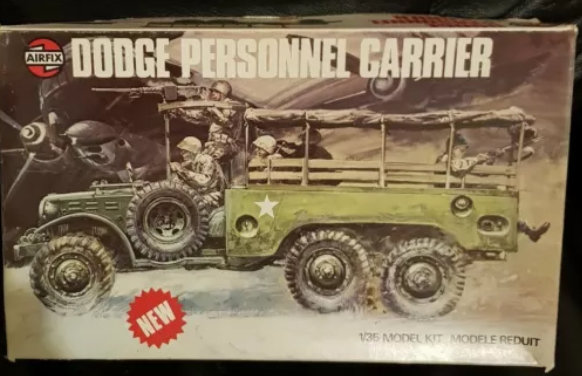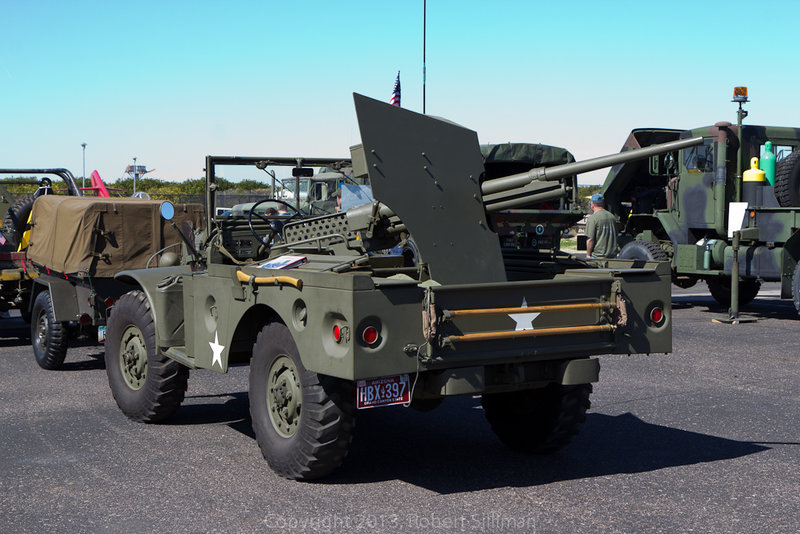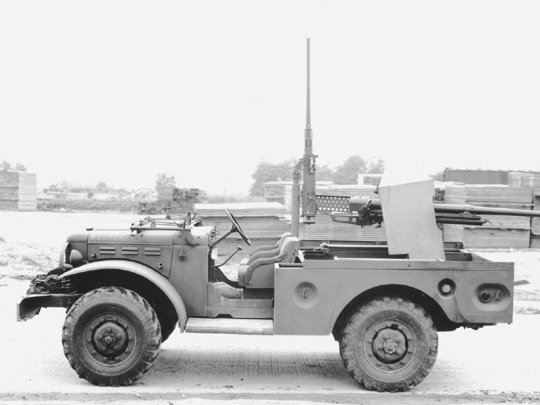Dodge war 2 by Airfix 1/35 scale.
The Dodge WC series, sometimes nicknamed'Beeps',[nb 3] were a prolific range of light 4WDand medium 6WD military utility trucks, produced by Dodge / Fargo during World War II.[nb 4] Together with the 1⁄4-ton jeepsproduced by Willys and Ford, the Dodge 1⁄2‑tons and 3⁄4‑tons made up nearly all of the light 4WD trucks supplied to the U.S. military in WWII – with Dodge contributing some 337,500 4WD units[nb 5] (over half as many as the jeep).[11][5][nb 6]
Contrary to the versatility of the highly standardized jeep, which was mostly achieved through field modification, the Dodge WC‑series came in many different, purpose-built, but mechanically uniform variants from the factory, much akin to the later family of High Mobility Multipurpose Wheeled Vehicles. The WC series evolved out of, and was part of a more extended family of trucks, with great mechanical parts commonality, that included open- and closed-cab cargo trucks and weapons carriers, (radio) command cars, reconnaissance vehicles, ambulances, carryalls, panel vans, and telephone installation and mobile emergency / field workshop trucks.
The Dodge WC series were essentially built in two generations. From 1940 to early 1942, almost 82,400 of the 1⁄2‑ton 4×4 Dodge trucks were built — initially called the VCseries, but the great majority (from 1941) in the WC series, and in more variants.[10][14][2]Contrary to what Dodge's nomenclature suggested, the 1941 WC models were a direct evolution of the 1940 VC models, retaining the U.S. Army's G-505 Ordnance Corps Supply Catalog number.
In 1942, the payload was uprated, and the trucks became the shorter G-502, 3⁄4‑ton, 4×4 Truck (Dodge), and the longer 1943, G-507, 11⁄2‑ton, 6x6 personnel and cargo truck (Dodge) — confusingly retaining Dodge WC model codes. Although the 3⁄4‑tons featured significant design improvements, they did retain some 80% interchangeable components and service parts with the 1⁄2‑ton models[14] — a vital Army requirement, for field maintenance and operability of the trucks.[15]
Dodge was the U.S. Army's main supplier of 1⁄2‑ton trucks, and its sole supplier of both 3⁄4‑ton trucks and 11⁄2‑ton 6x6 trucks in World War II.[5] With over a quarter million units built through August 1945, the G-502 3⁄4‑tons were the most common variants in the WC‑series.[5]
After the war, Dodge developed the 3⁄4-ton WC‑series into the civilian 4×4 Dodge Power Wagon; and in 1951, the WCs were replaced by the very similar 3⁄4‑ton 4x4 Dodge M-seriesvehicles .
Though the majority of Dodges built were 'Weapons Carriers', "WC" was not abbreviated from this, but a general Dodge model code – initially "W" for 1941, and "C" for a (nominal) half-ton payload rating. However, the "WC" model code was simply retained after 1941 — for both the 3⁄4-ton, as well as the 11⁄2‑tonrated 6x6 Dodges.[14]
All in all, not counting mechanically related variants, the WC series alone involved 52 model versions (thirty 1⁄2‑ton 4×4, eight 1⁄2‑ton 4×2, twelve 3⁄4‑ton 4×4, and two 11⁄2‑ton 6×6 models). Creating vehicles of a common platform in such a variety of designs, with payloads ranging from 1⁄2‑ton to 11⁄2‑tons, had no equal in its time, and is seen as an extraordinary feat of the WWII American auto industry.[16]





























/http%3A%2F%2Fstorage.canalblog.com%2F96%2F00%2F1123093%2F134247667_o.jpeg)
/http%3A%2F%2Fstorage.canalblog.com%2F06%2F82%2F1123093%2F134235267_o.jpeg)
/http%3A%2F%2Fstorage.canalblog.com%2F63%2F65%2F1123093%2F134214755_o.jpeg)
/http%3A%2F%2Fstorage.canalblog.com%2F80%2F34%2F1123093%2F134214751_o.jpeg)